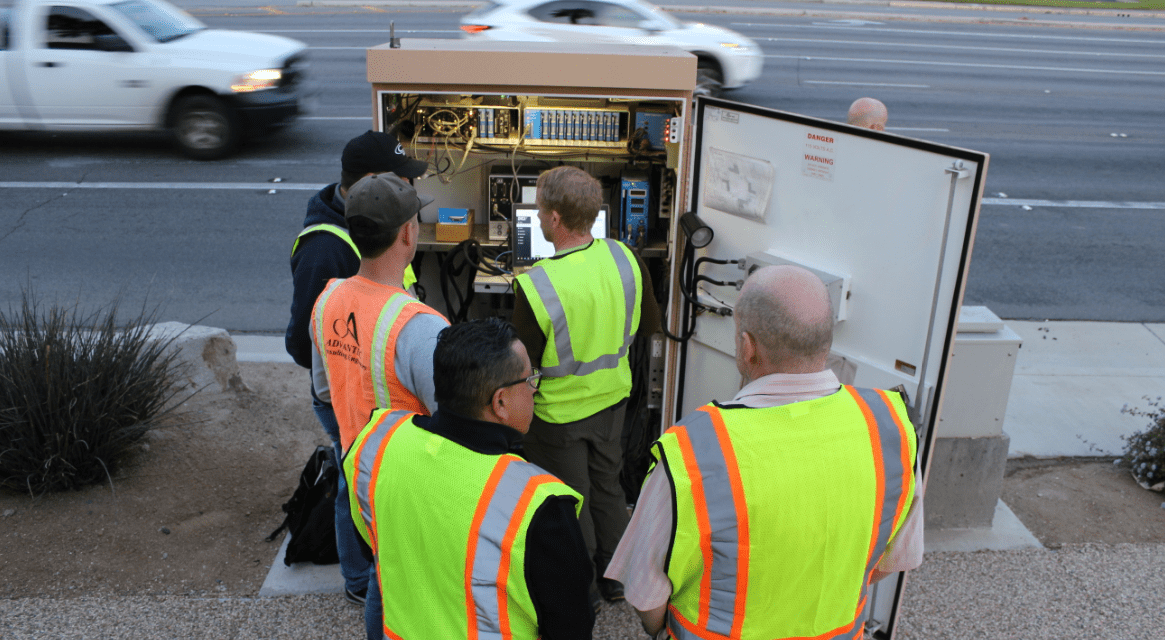Synchronization of traffic signals designed to improve travel across Coachella Valley’s roadways
PALM DESERT – CV Sync, a valleywide program to synchronize traffic signals on the major regional roadways, has received the green light from the Coachella Valley Association of Governments.
The CVAG Executive Committee approved a construction contract for $21.185 million with Crosstown Electrical Data, Inc., a Southern California-based firm that specializes in the installation of intelligent transportation system (ITS) infrastructure. The Executive Committee, which met last week, also authorized a contract amendment with Advantec Engineering as well as an agreement with the city of Desert Hot Springs that expedites a later phase of the CV Sync project.
Construction of CV Sync’s first phase – synchronizing traffic signals on Highway 111, Washington Street and Ramon Road – will begin this spring and take about 18 months to complete. The second phase, which includes another 21 corridors, is expected to start later this year.
“Anyone who has traveled along Highway 111, Washington Street or Ramon Road knows the frustration of mistimed traffic signals,” Indio Councilmember Glenn Miller, who is Chair of the CVAG Executive Committee, said in a prepared statement. “CV Sync will make it more efficient to get across the Coachella Valley by reducing travel times for residents and visitors, and improve the air quality by helping reduce emissions.”
Synchronizing the traffic signals across the Coachella Valley has been a longstanding goal at CVAG. Design and engineering of CV Sync started in 2016, and the work was later expanded to encompass upgrading all traffic controllers to the same standard. A request for construction bids was issued in fall 2020. Crosstown was the lowest qualified bidder, and the bid was lower than the engineering estimate.
CV Sync will establish a framework for future “smart region” by installing highly technical hardware and software systems connected into a world-class, regional network. The project spans the Coachella Valley, but does not extend into the City of Rancho Mirage, which previously secured funding to do its own signal synchronization project.
CV Sync will have technology that allows all cities to communicate and coordinate in real-time to manage traffic flow, which will be especially useful for the large events that draw hundreds of thousands of tourists to the Coachella Valley. This project will also deploy fiber-optic broadband technology throughout the Coachella Valley, which can help to unlock federal and state funding opportunities. CV Sync also includes improved communication to motorists, including changeable message signs that will be first deployed in the city of Desert Hot Springs.
“CV Sync will go a long way to saving motorists time when they are driving to the store, to work or to drop their kids off at school,” said Desert Hot Springs Mayor Scott Matas, who is Chair of CVAG’s Transportation Committee. “It will become the backbone of a fiber network that positions the Coachella Valley to become a ‘smart region’ in terms of advanced technology, meaning in the future these signals will ‘talk’ with connected and autonomous vehicles.”
CVAG has previously conducted a pilot project to demonstrate to local cities how the technology works. CVAG secured $13.315 million in federal Congestion and Air Quality (CMAQ) funding for the
construction of the Phase I improvements. The remaining costs are funded through Measure A sales tax revenue.
Image Sources
- CVAG Employees: CVAG




![Enrolling Now, Rewarding Careers Ahead [Sponsored]](https://ukenreport.com/wp-content/uploads/2024/04/COD_heroes_1-1385-2-440x264.jpg)


